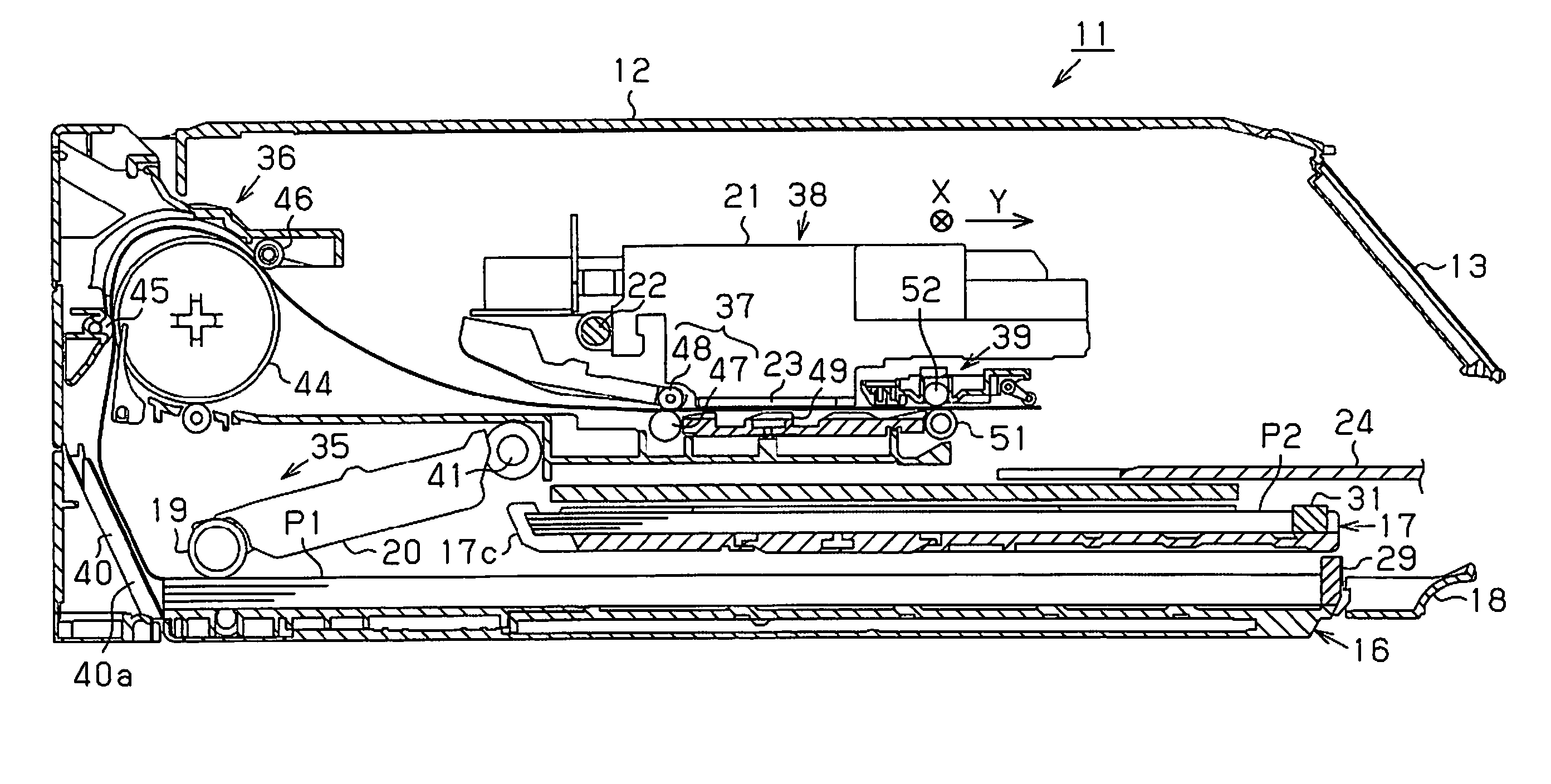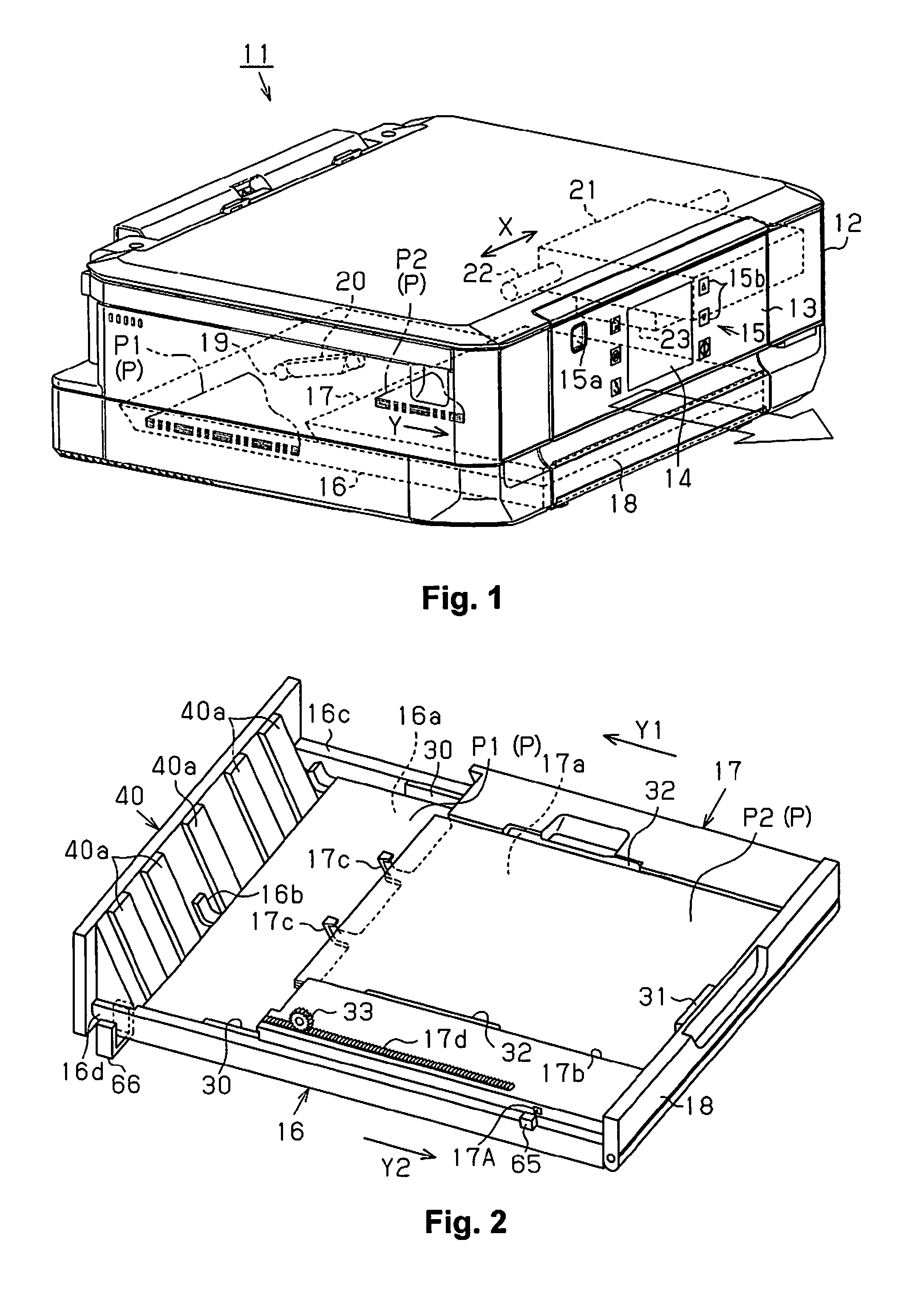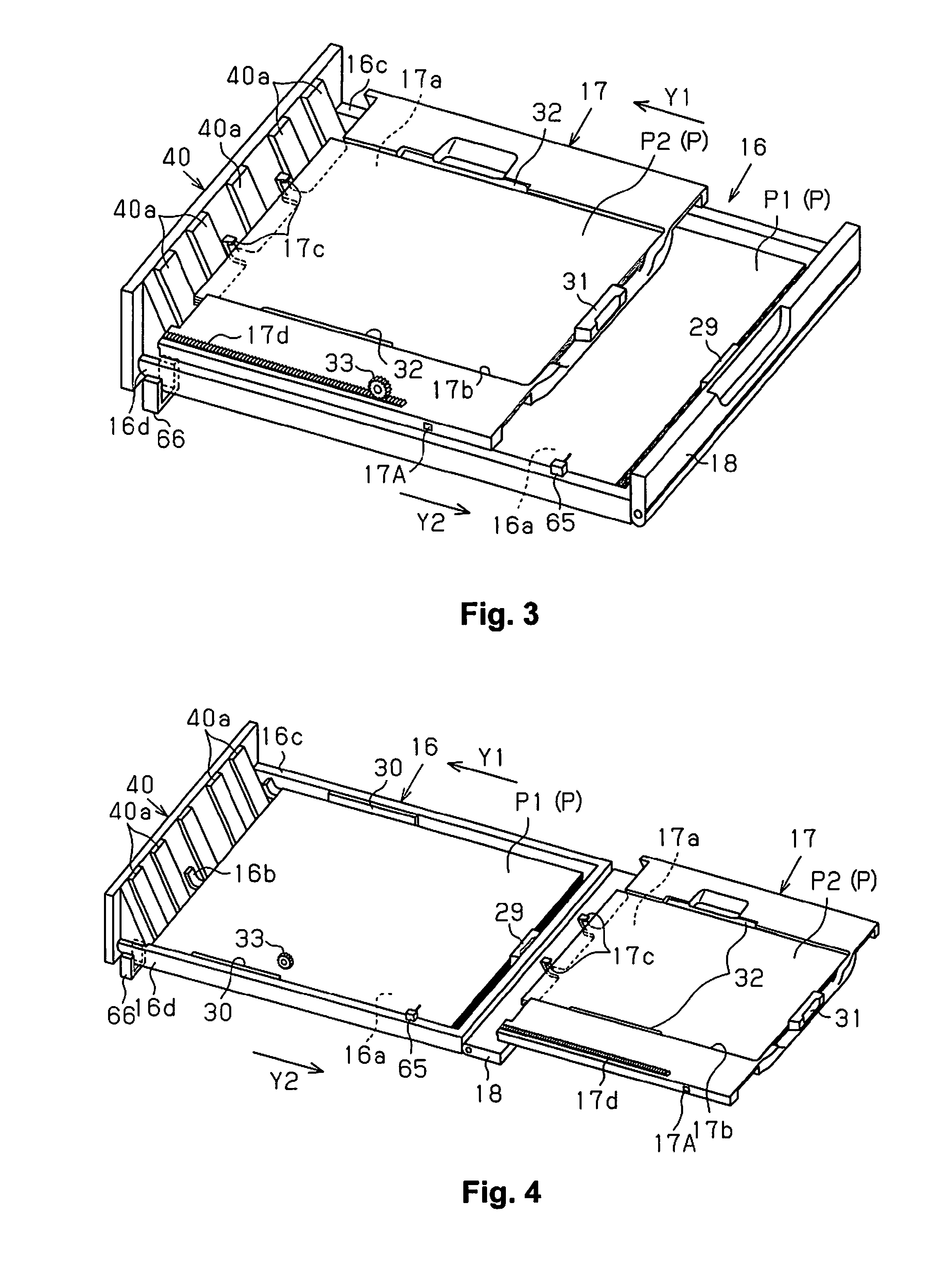Printing apparatus
a printing apparatus and printing technology, applied in the direction of digital output to print units, instruments, transportation and packaging, etc., can solve the problems of increasing the number of sensors needed, the user's difficulty in taking out the first tray,
- Summary
- Abstract
- Description
- Claims
- Application Information
AI Technical Summary
Benefits of technology
Problems solved by technology
Method used
Image
Examples
second embodiment
[0144]A second embodiment will be described next with reference to the diagrams. It is not possible for movement direction to be detected when the movable tray 17 is being inserted and extracted in the first embodiment, but it is possible for movement direction to also be detected when the movable tray 17 is being inserted and extracted in the second embodiment. Here, the configuration for detecting the position of the movable tray 17 and the content for controlling which is performed in order to detect the position of the movable tray 17 are different to the first embodiment but, since the other configurations are the same as the first embodiment, the configurations which are shared with the first embodiment are given the same reference numerals and the description thereof is omitted.
[0145]As shown in FIG. 13, in addition to the section to be identified 17A, a section to be identified 17B with a platform shape in a planar view is formed at the side section of the movable tray 17 in...
PUM
 Login to View More
Login to View More Abstract
Description
Claims
Application Information
 Login to View More
Login to View More - R&D
- Intellectual Property
- Life Sciences
- Materials
- Tech Scout
- Unparalleled Data Quality
- Higher Quality Content
- 60% Fewer Hallucinations
Browse by: Latest US Patents, China's latest patents, Technical Efficacy Thesaurus, Application Domain, Technology Topic, Popular Technical Reports.
© 2025 PatSnap. All rights reserved.Legal|Privacy policy|Modern Slavery Act Transparency Statement|Sitemap|About US| Contact US: help@patsnap.com



